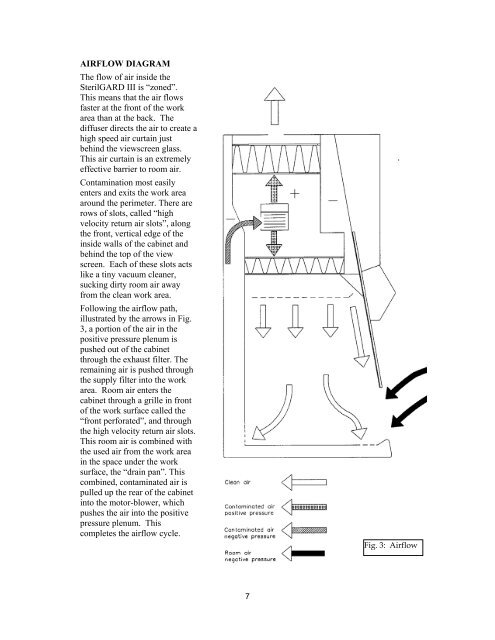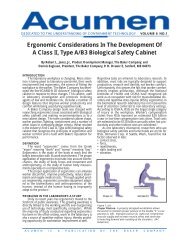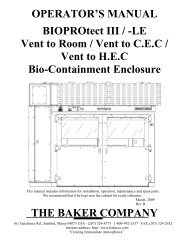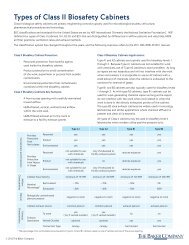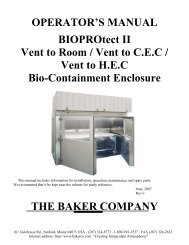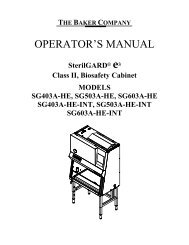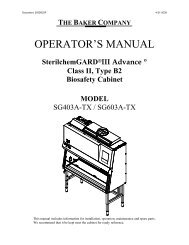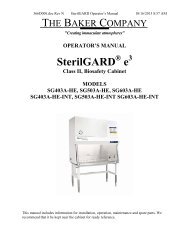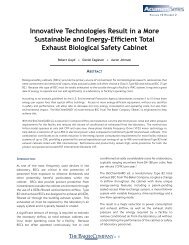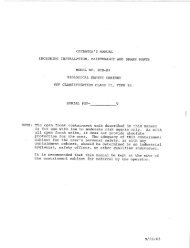SterilGARD III Advance SG403 / SG603 - Baker Company
SterilGARD III Advance SG403 / SG603 - Baker Company
SterilGARD III Advance SG403 / SG603 - Baker Company
You also want an ePaper? Increase the reach of your titles
YUMPU automatically turns print PDFs into web optimized ePapers that Google loves.
AIRFLOW DIAGRAM<br />
The flow of air inside the<br />
<strong>SterilGARD</strong> <strong>III</strong> is “zoned”.<br />
This means that the air flows<br />
faster at the front of the work<br />
area than at the back. The<br />
diffuser directs the air to create a<br />
high speed air curtain just<br />
behind the viewscreen glass.<br />
This air curtain is an extremely<br />
effective barrier to room air.<br />
Contamination most easily<br />
enters and exits the work area<br />
around the perimeter. There are<br />
rows of slots, called “high<br />
velocity return air slots”, along<br />
the front, vertical edge of the<br />
inside walls of the cabinet and<br />
behind the top of the view<br />
screen. Each of these slots acts<br />
like a tiny vacuum cleaner,<br />
sucking dirty room air away<br />
from the clean work area.<br />
Following the airflow path,<br />
illustrated by the arrows in Fig.<br />
3, a portion of the air in the<br />
positive pressure plenum is<br />
pushed out of the cabinet<br />
through the exhaust filter. The<br />
remaining air is pushed through<br />
the supply filter into the work<br />
area. Room air enters the<br />
cabinet through a grille in front<br />
of the work surface called the<br />
“front perforated”, and through<br />
the high velocity return air slots.<br />
This room air is combined with<br />
the used air from the work area<br />
in the space under the work<br />
surface, the “drain pan”. This<br />
combined, contaminated air is<br />
pulled up the rear of the cabinet<br />
into the motor-blower, which<br />
pushes the air into the positive<br />
pressure plenum. This<br />
completes the airflow cycle.<br />
Fig. 3: Airflow<br />
7


